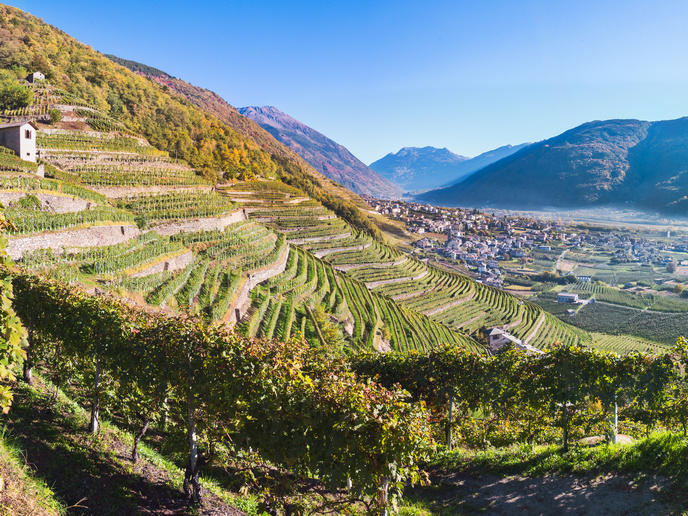The times they are a-changin’ in medieval Italy
Central Italy, between the 6th and 10th centuries, represents one of the most important political and social laboratories in Europe. Funded with the support of the Marie Skłodowska-Curie Actions programme, the InAndAround project investigated human-environmental and human-climate interactions in Italy, including their effect on migratory flows. Notably, this period has previously received little coverage in academic circles. Research centred around two data sources in the micro-regions of Lucca and Rieti. Long-duration, high-resolution climate records from lake sediment cores obtained recently were combined with written records from Lucchese archives. These include the sale or donation of lands, rents and leases, disputes and their settlements.
Transition from forest to cultivation and meadow
Sediment cores indicate two time-zones. The first is dominated by forest species declining gradually with increasing meadow, grass and oak species. Interestingly, comments Annamaria Pazienza, Marie Curie fellow and principal investigator, “this coincides with the final phase of the Roman period. Differently to what was previously thought, the flora does not suggest that the Romans were responsible for large-scale deforestation because there was a slow increase in oaks and other meadow taxa replacing mesic forest in Sibolla’s cores,” Pazienza points out. Following on from this first phase, vegetation showed a shift from dominant forest to cultivated landscape. “This can be confidently connected to the establishment of a new way of exploiting the landscape imposed by the new Carolingian rulers which showed progressively tight control of rural and human resources exercised by lay and ecclesiastical local lords,” Pazienza explains.
Refinement of tools for analysis of lake sediments
The new climate record has largely been obtained from the analysis of the oxygen and hydrogen isotope values of the lake sediments. Given the uncertainty of climatic reconstructions from the study of pollen and spores, Adam Csank, professor and assistant investigator at the University of Nevada tested a relatively new method. Csank used isotope delta-O-18 from carbonates. Variations of delta-O-18 in oxygen-bearing minerals have been used as proxies for various environmental records. These results are in line with a regional rainfall reconstruction using delta-O-18 from mineral deposits in Renella Cave about 50 km from Lake Sibolla’s core sites. “As long as the research progresses, and our climatic dataset expands, a finer spatiotemporal characterisation will be obtained. The new InAndAround long-duration and high-resolution climate record from Sibolla Lake will contribute greatly to this scope,” Pazienza concludes.
Documents point to new economic and political priorities
Records from Lucca totalling some 13 000 over the two time periods arguably form the richest set of archival historical sources in Italy. When read together, the documents demonstrate different patterns of exploitation and land use. Introduction of new place names is indicative, for example, of a large fiscal estate close to Sibolla. One such Lombard term ‘gualdus/cafagium’, for instance, means a king’s wooden reserve. When cross-referenced with legal texts, this place was exploited for grazed woodland (primarily by pigs) and even small-scale cultivation.
Challenges and the future for palaentology studies
The InAndAround project is essentially interdisciplinary where use of different vocabulary, scales, research questions, and perspectives and overall lack of proper epistemological devices conspire to introduce erroneous interpretations. “Project research has worked to override over-simplistic explanations of complex sociocultural phenomena, where anthropogenic and climatic factors interact in non-linear ways,” Pazienza emphasises. The results brought by the InandAround project will prove instrumental in gaining new insights about the correlations among climate/environmental changes, socio-political/economic contingencies and migratory flows within this historic context. The activities of the InAndAround project can be viewed in an informative video here.
Keywords
InAndAround, climate, Italy, sediment cores, settlement, early Middle Ages, Sibolla Lake, human influence, vegetation



